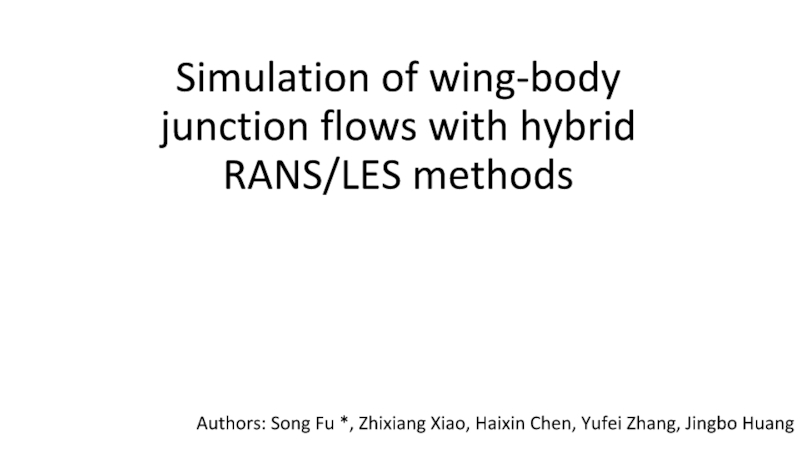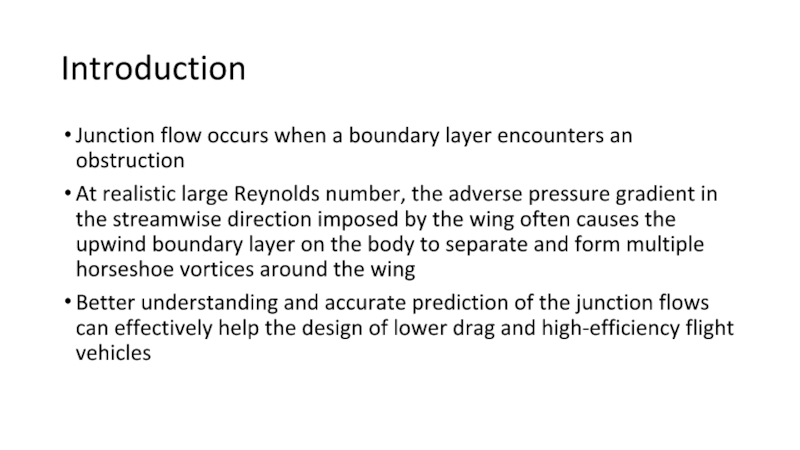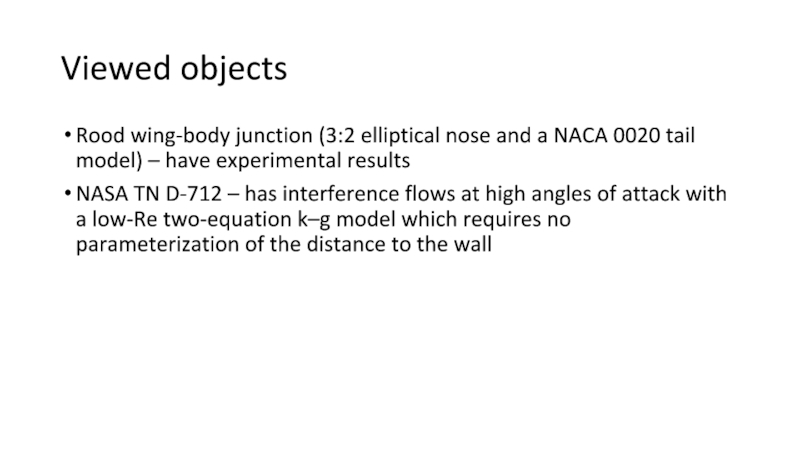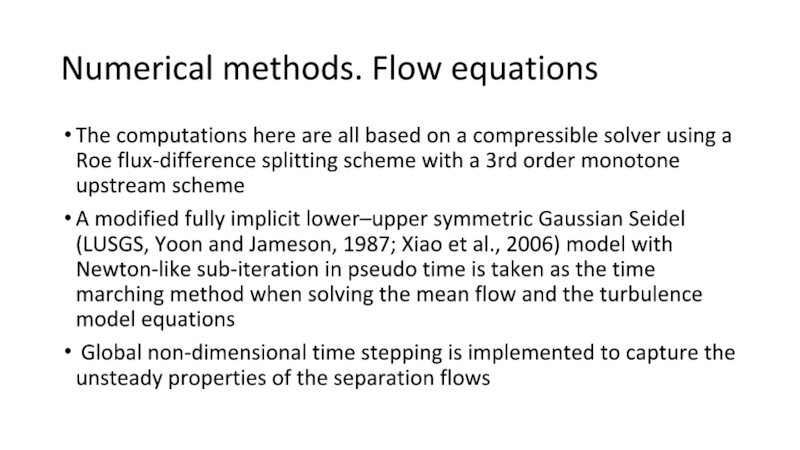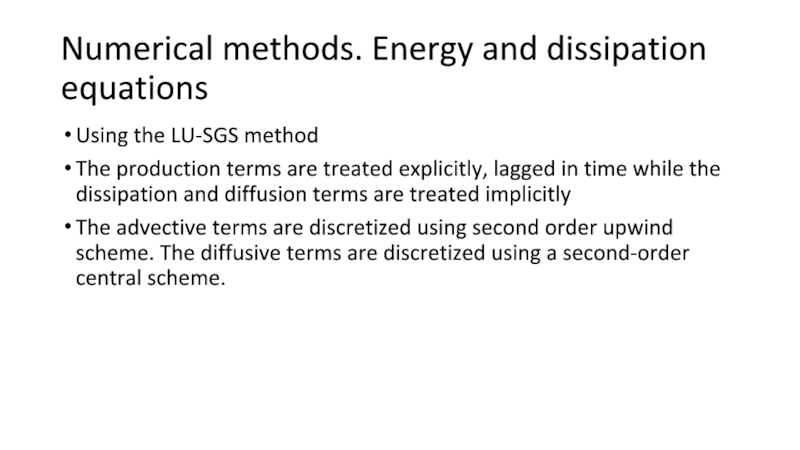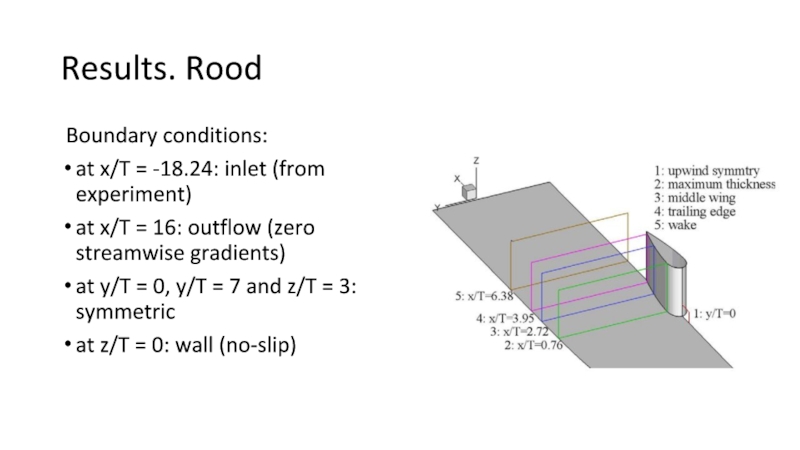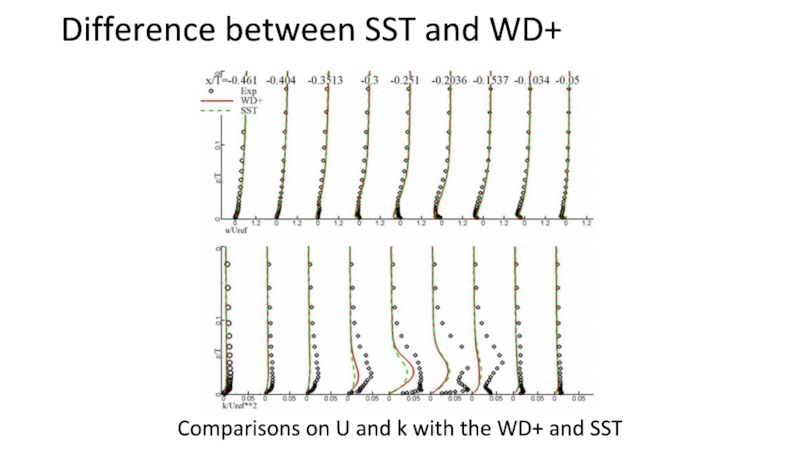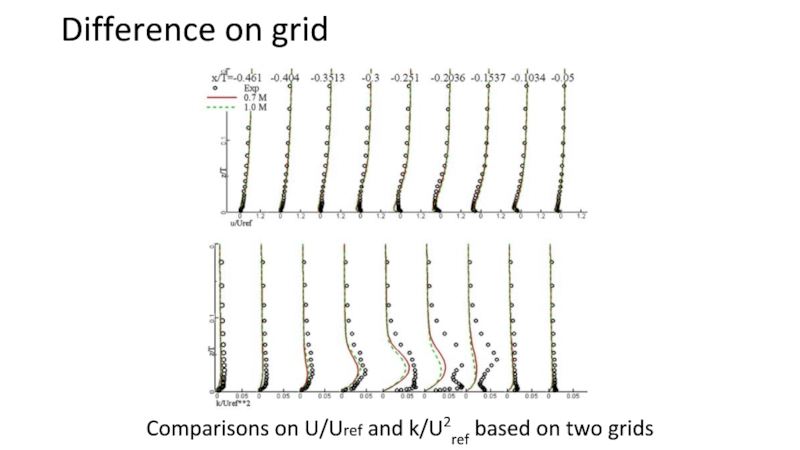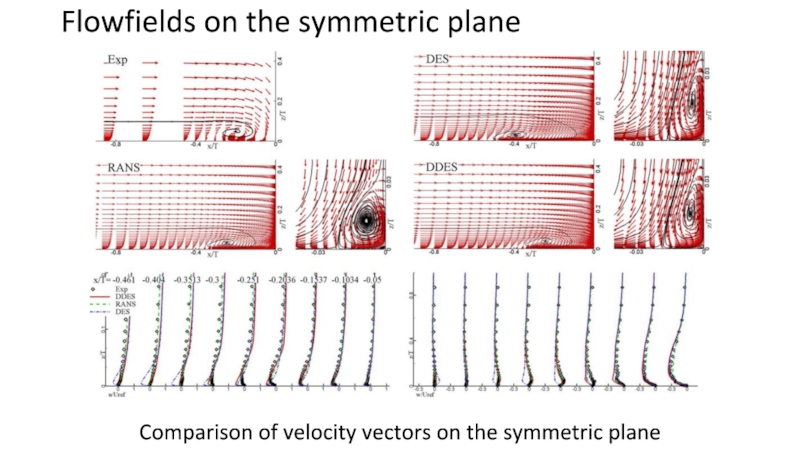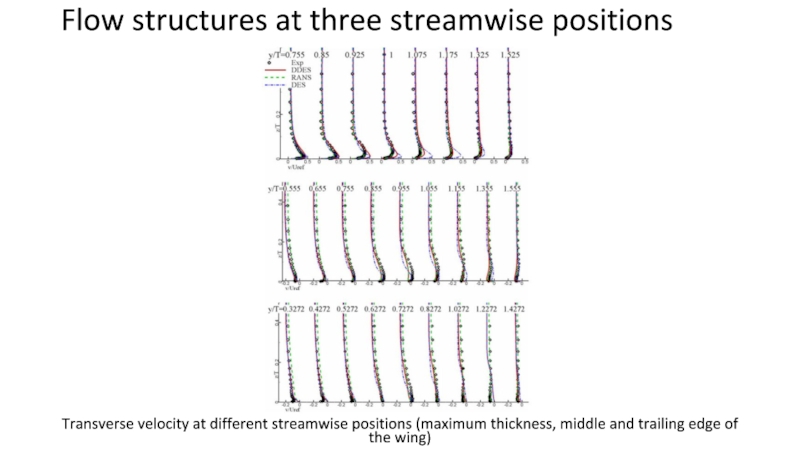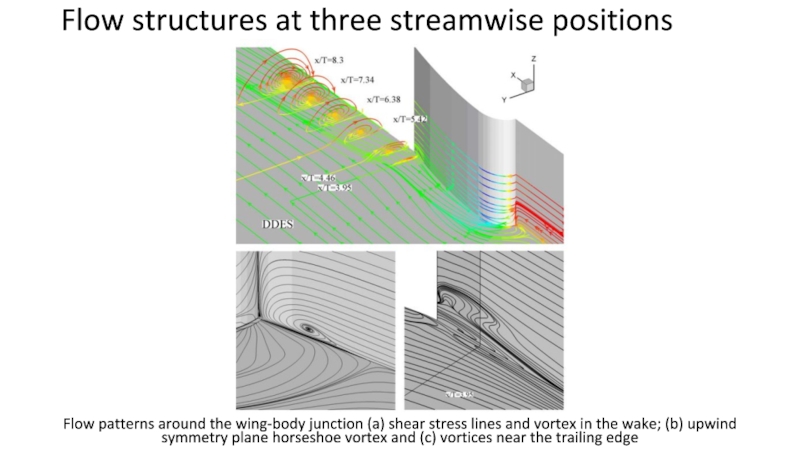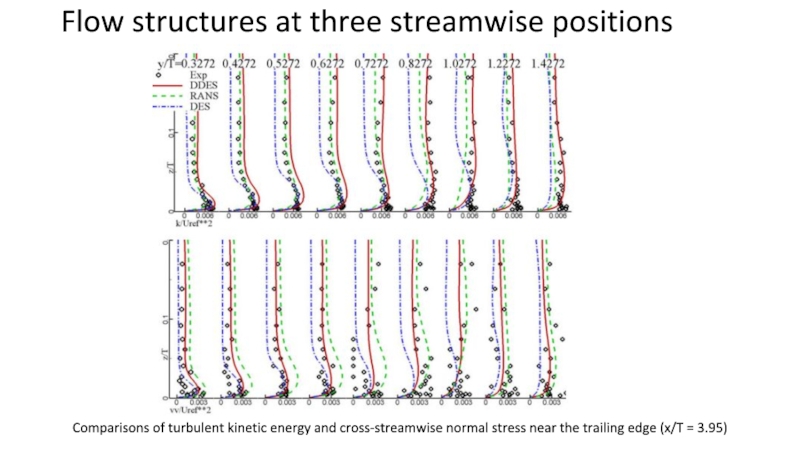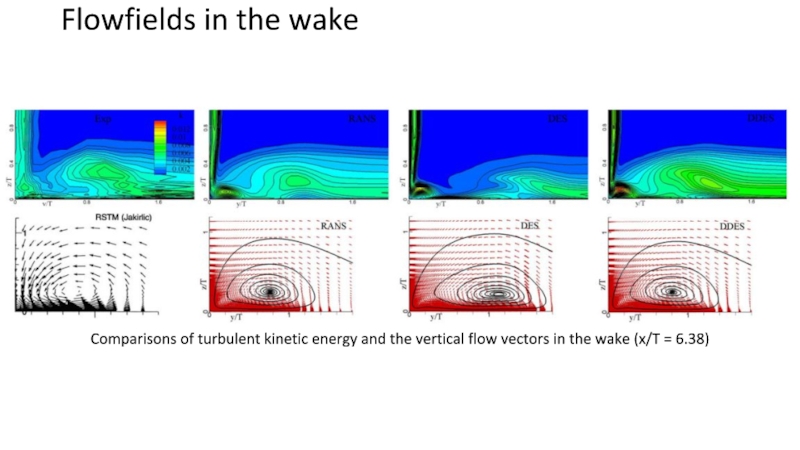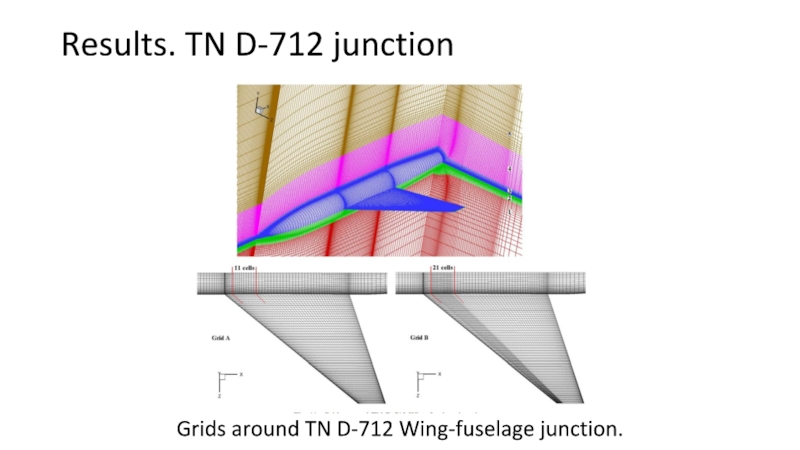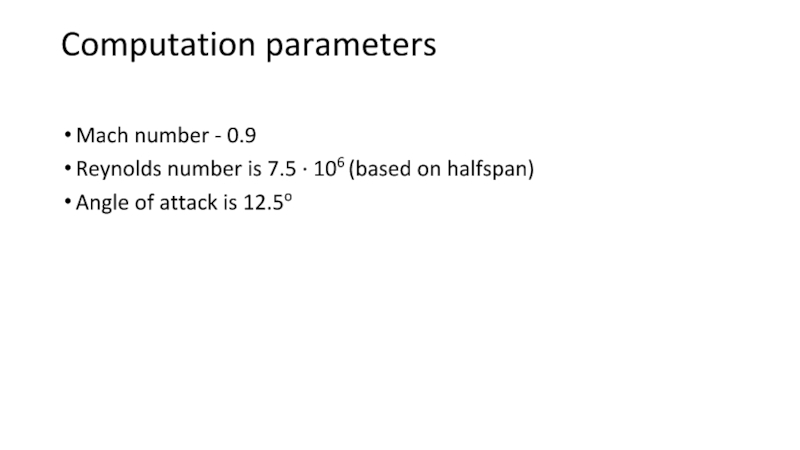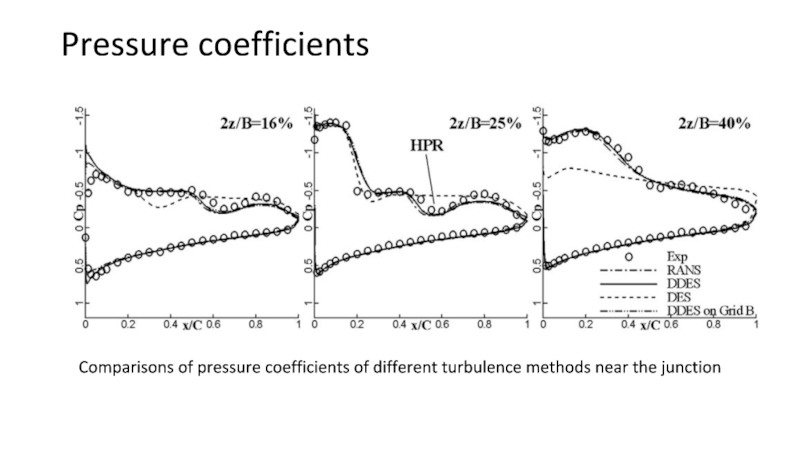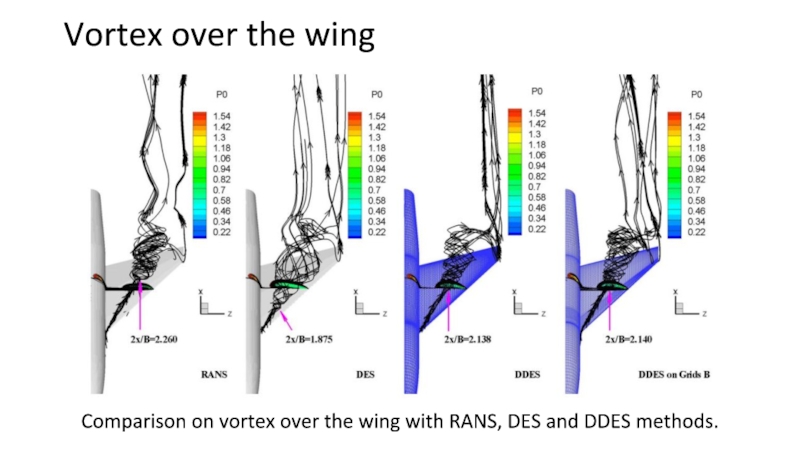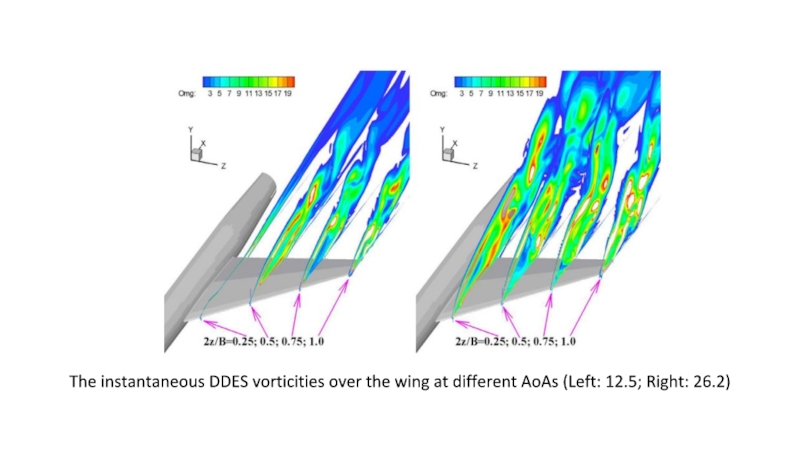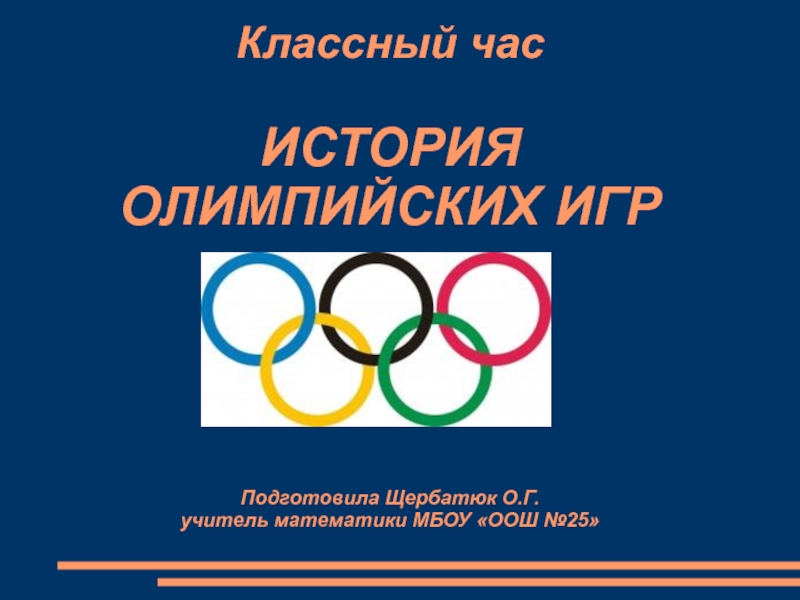*, Zhixiang Xiao, Haixin Chen, Yufei Zhang, Jingbo Huang
- Главная
- Разное
- Дизайн
- Бизнес и предпринимательство
- Аналитика
- Образование
- Развлечения
- Красота и здоровье
- Финансы
- Государство
- Путешествия
- Спорт
- Недвижимость
- Армия
- Графика
- Культурология
- Еда и кулинария
- Лингвистика
- Английский язык
- Астрономия
- Алгебра
- Биология
- География
- Детские презентации
- Информатика
- История
- Литература
- Маркетинг
- Математика
- Медицина
- Менеджмент
- Музыка
- МХК
- Немецкий язык
- ОБЖ
- Обществознание
- Окружающий мир
- Педагогика
- Русский язык
- Технология
- Физика
- Философия
- Химия
- Шаблоны, картинки для презентаций
- Экология
- Экономика
- Юриспруденция
Simulation of wing-body junction flows with hybrid RANS/LES methods презентация
Содержание
- 1. Simulation of wing-body junction flows with hybrid RANS/LES methods
- 2. Introduction Junction flow occurs when a boundary
- 3. Viewed objects Rood wing-body junction (3:2 elliptical
- 4. Numerical methods. Flow equations The computations here
- 5. Numerical methods. Energy and dissipation equations Using
- 6. Results. Rood Boundary conditions: at x/T
- 7. Difference between SST and WD+ Comparisons on U and k with the WD+ and SST
- 8. Difference on grid Comparisons on U/Uref and k/U2ref based on two grids
- 9. Flowfields on the symmetric plane Comparison of velocity vectors on the symmetric plane
- 10. Flow structures at three streamwise positions Transverse
- 11. Flow structures at three streamwise positions Flow
- 12. Flow structures at three streamwise positions Comparisons
- 13. Flowfields in the wake Comparisons of turbulent
- 14. Results. TN D-712 junction Grids around TN D-712 Wing-fuselage junction.
- 15. Mach number - 0.9 Reynolds number is
- 16. Pressure coefficients Comparisons of pressure coefficients of different turbulence methods near the junction
- 17. Vortex over the wing Comparison on vortex
- 18. The instantaneous DDES vorticities over the wing at different AoAs (Left: 12.5; Right: 26.2)
- 19. Flow patterns of DDES Transverse flow structure
- 20. Conclusion Weakly nonlinear correction k–x model (WD+)
Слайд 2Introduction
Junction flow occurs when a boundary layer encounters an obstruction
At realistic
large Reynolds number, the adverse pressure gradient in the streamwise direction imposed by the wing often causes the upwind boundary layer on the body to separate and form multiple horseshoe vortices around the wing
Better understanding and accurate prediction of the junction flows can effectively help the design of lower drag and high-efficiency flight vehicles
Better understanding and accurate prediction of the junction flows can effectively help the design of lower drag and high-efficiency flight vehicles
Слайд 3Viewed objects
Rood wing-body junction (3:2 elliptical nose and a NACA 0020
tail model) – have experimental results
NASA TN D-712 – has interference flows at high angles of attack with a low-Re two-equation k–g model which requires no parameterization of the distance to the wall
NASA TN D-712 – has interference flows at high angles of attack with a low-Re two-equation k–g model which requires no parameterization of the distance to the wall
Слайд 4Numerical methods. Flow equations
The computations here are all based on a
compressible solver using a Roe flux-difference splitting scheme with a 3rd order monotone upstream scheme
A modified fully implicit lower–upper symmetric Gaussian Seidel (LUSGS, Yoon and Jameson, 1987; Xiao et al., 2006) model with Newton-like sub-iteration in pseudo time is taken as the time marching method when solving the mean flow and the turbulence model equations
Global non-dimensional time stepping is implemented to capture the unsteady properties of the separation flows
A modified fully implicit lower–upper symmetric Gaussian Seidel (LUSGS, Yoon and Jameson, 1987; Xiao et al., 2006) model with Newton-like sub-iteration in pseudo time is taken as the time marching method when solving the mean flow and the turbulence model equations
Global non-dimensional time stepping is implemented to capture the unsteady properties of the separation flows
Слайд 5Numerical methods. Energy and dissipation equations
Using the LU-SGS method
The production terms
are treated explicitly, lagged in time while the dissipation and diffusion terms are treated implicitly
The advective terms are discretized using second order upwind scheme. The diffusive terms are discretized using a second-order central scheme.
The advective terms are discretized using second order upwind scheme. The diffusive terms are discretized using a second-order central scheme.
Слайд 6Results. Rood
Boundary conditions:
at x/T = -18.24: inlet (from experiment)
at x/T
= 16: outflow (zero streamwise gradients)
at y/T = 0, y/T = 7 and z/T = 3: symmetric
at z/T = 0: wall (no-slip)
at y/T = 0, y/T = 7 and z/T = 3: symmetric
at z/T = 0: wall (no-slip)
Слайд 10Flow structures at three streamwise positions
Transverse velocity at different streamwise positions
(maximum thickness, middle and trailing edge of the wing)
Слайд 11Flow structures at three streamwise positions
Flow patterns around the wing-body junction
(a) shear stress lines and vortex in the wake; (b) upwind symmetry plane horseshoe vortex and (c) vortices near the trailing edge
Слайд 12Flow structures at three streamwise positions
Comparisons of turbulent kinetic energy and
cross-streamwise normal stress near the trailing edge (x/T = 3.95)
Слайд 13Flowfields in the wake
Comparisons of turbulent kinetic energy and the vertical
flow vectors in the wake (x/T = 6.38)
Слайд 15Mach number - 0.9
Reynolds number is 7.5 · 106 (based on
halfspan)
Angle of attack is 12.5o
Angle of attack is 12.5o
Computation parameters
Слайд 16Pressure coefficients
Comparisons of pressure coefficients of different turbulence methods near the
junction
Слайд 18
The instantaneous DDES vorticities over the wing at different AoAs (Left:
12.5; Right: 26.2)
Слайд 19Flow patterns of DDES
Transverse flow structure at different streamwise positions by
DDES. 2x/B = 1.667, 1.833, 2.167 and 2.500.
Слайд 20Conclusion
Weakly nonlinear correction k–x model (WD+) can effectively predict the flows
past wing-body junctions with adverse pressure gradients at zero and middle angle of attack
But one has to go to DDES to capture the large eddies detached from the leading edge of the wing in NASA TN D-712 case at 12.5o angle of attack
DES delivers the primary horseshoe vortex for the Rood case and the vortex breakdown for the TN D-712 case too far upstream as compared to the measurements
Among the models studied here DDES provides a reliable tool in the modeling of the wing-body junction flows
But one has to go to DDES to capture the large eddies detached from the leading edge of the wing in NASA TN D-712 case at 12.5o angle of attack
DES delivers the primary horseshoe vortex for the Rood case and the vortex breakdown for the TN D-712 case too far upstream as compared to the measurements
Among the models studied here DDES provides a reliable tool in the modeling of the wing-body junction flows
